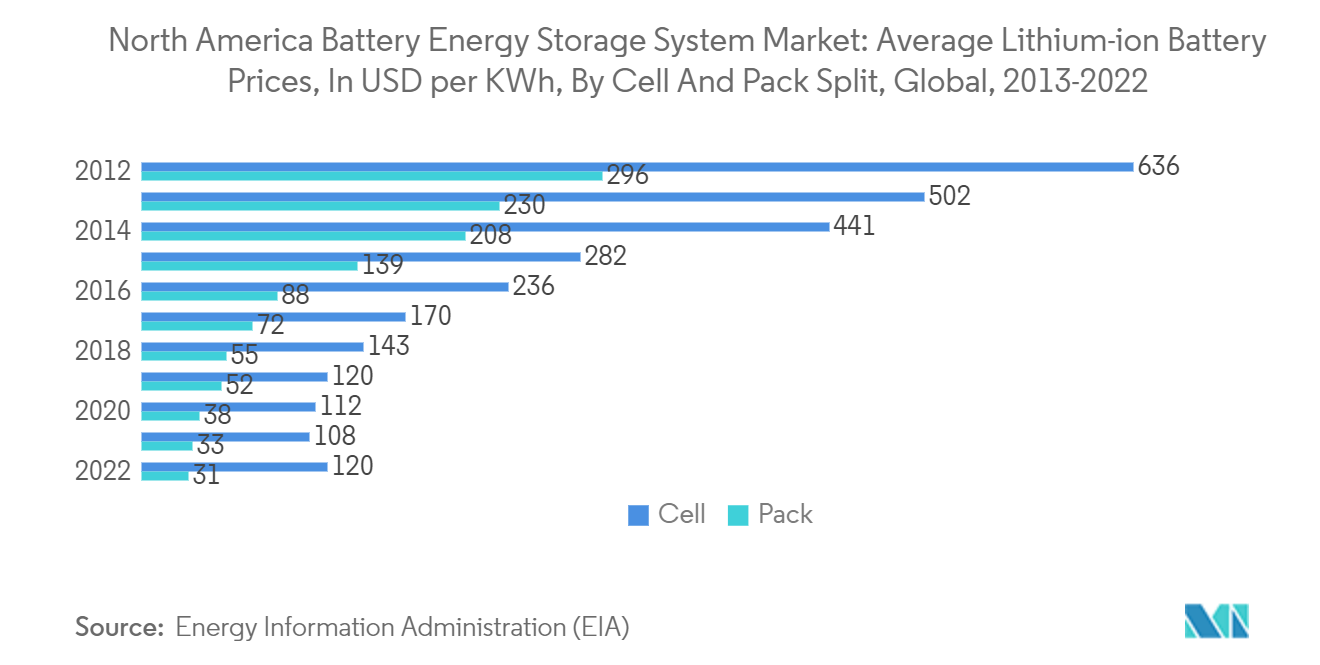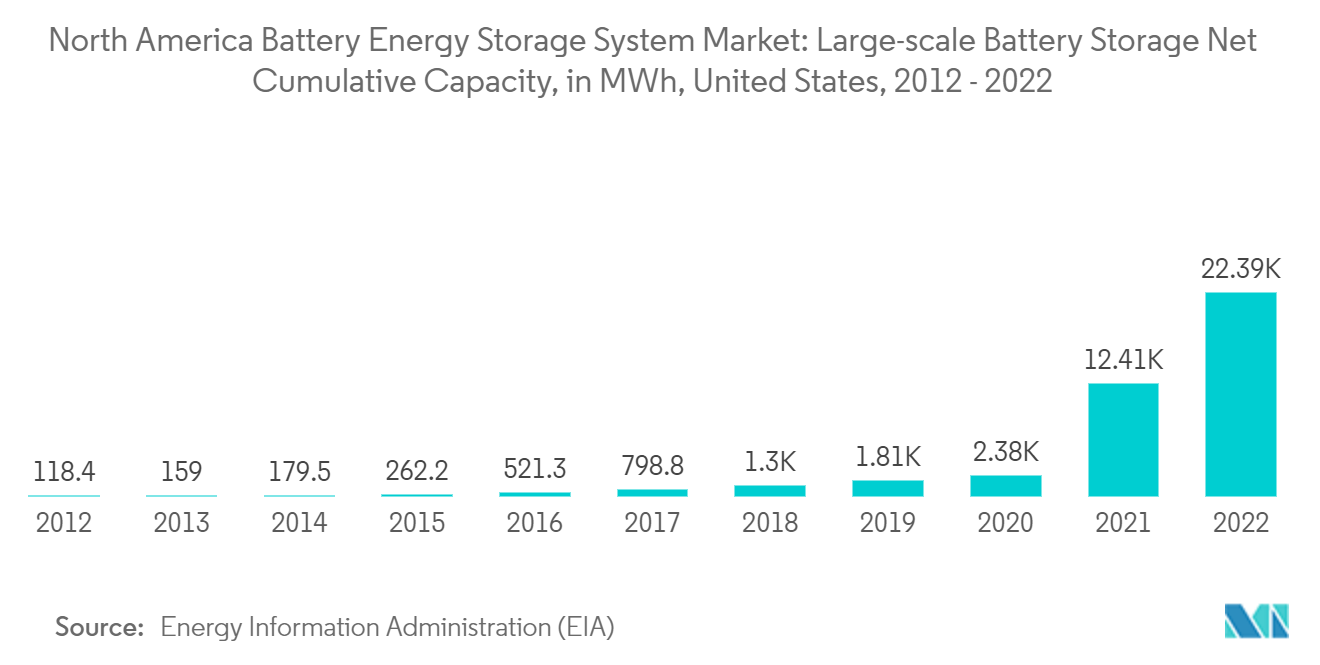Market Trends of North America Battery Energy Storage System Industry
Lithium-Ion Battery Is Expected to Witness Significant Growth
- Lithium-ion (Li-ion) batteries are nearly 100% efficient in charge and discharge, allowing the same ampere-hours in and out. These batteries offer various technical advantages over other technologies, such as lead-acid batteries. Rechargeable Li-ion batteries, on an average, offer cycles more than 5,000 times, in comparison to lead-acid batteries that last for around 400-500 times.
- Li-ion batteries can be recharged numerous times and are more stable. Further, they tend to have a higher energy density, voltage capacity, and lower self-discharge rate than other rechargeable batteries. This improves power efficiency as a single cell has longer charge retention than different battery types.
- Additionally, Li-ion batteries do not need as frequent maintenance and replacement as the lead-acid batteries. Li-ion batteries maintain their voltage throughout the discharge cycle, allowing greater and longer-lasting efficiency of electrical components, whereas the voltage of lead-acid batteries drops consistently throughout the discharge cycle. Despite the higher upfront cost of Li-ion batteries, the true cost is much less than that of lead-acid batteries when considering lifespan and performance.
- Moreover, according to the Energy Information Administration (EIA), the average cost of lithium-ion batteries was recorded as USD 198 per kWh in 2018, which has declined by 23.7% compared to the price recorded as USD 151 per kWh in 2022. Also, it is expected that lithium-ion battery prices will face a gradual dip again from 2024, when lithium prices are expected to ease as more extraction and refining capacity comes online and reach USD 100/kWh by 2026.
- Further, the government of various countries in the region is developing the lithium-ion battery manufacturing infrastructure supporting the energy storage market. For instance, in June 2023, the United States Department of Energy’s Advanced Materials and Manufacturing Technologies Office (AMMTO) announced USD 2 million for the rejuvenation, recycling, and reuse of Lithium-ion battery programs administered through the ReCell Center located at Argonne National Laboratory (ANL).
- Similarly, many companies in the region are investing in lithium-ion battery technology. For instance, in January 2023, United States battery manufacturer Yoshino Technology announced the development of solid-state lithium-ion batteries with outputs ranging from 330 W - to 4,000 W designed for off-grid applications, home backup, and energizing small industrial machinery. The battery system can be used in combination with solar PV panels. The newly introduced 4,000 W power station has a peak power of 6,000 W and 2,611 Wh capacity. A 600 W solar panel can fully recharge in 5.5 hours.
- Therefore the growth in the energy storage is mainly expected to have a significant impact on the growth of lithium-ion battery market in the country during the forecast period.

The United States to Dominate the Market
- The battery energy storage system (BESS) in the United States has experienced significant changes in the past few years, especially in the residential and commercial sectors, supported by rising investments in renewable energy infrastructure.
- The rise in the adoption of solar PV systems by the residential, Commercial, and industrial (C&I) sectors is expected to be a substantial driver for the market studied. Government initiatives, such as net metering, have been one of the significant factors in adopting rooftop solar in the past few years.
- Further, in December 2022, The California Public Utilities Commission (CPUC) decided to discontinue new approvals of NEM 2.0 on 13 April 2023, replacing it with NEM 3.0, which only offers wholesale credits for their excess energy. NEM 2.0 and NEM 1.0 customers are expected to continue enjoying their benefits for 20 years from activation. Thus, this initiative will also positively impact during the forecast period.
- In the United States, most energy storage for residential, Commercial, and industrial (C&I) applications uses battery storage systems. Other energy storage systems include thermal and mechanical energy storage. Small-scale battery storage is a significant part of developing energy storage in the United States. Small-scale battery storage is at facilities with less than 1 MW of generating capacity.
- As of 2022, the cumulative large-scale battery storage capacity was around 22,385.1 megawatt-hours (MWh), which was approximately 80% percent more than in 2021, as per the United States Energy Information Administration.
- In the United States, the California Independent System Operator (CAISO) and Electric Reliability Council of Texas (ERCOT) have most of the large-scale battery storage capacity additions. In 2022, CAISO had 7561.3 MWh or 34 % share, and ERCOT had 1684.4 MWh capacity or 7.5% share in the country’s overall installed capacity.
- Therefore, considering the abovementioned factors, the battery energy storage systems market is expected to witness considerable progress in the upcoming years.

